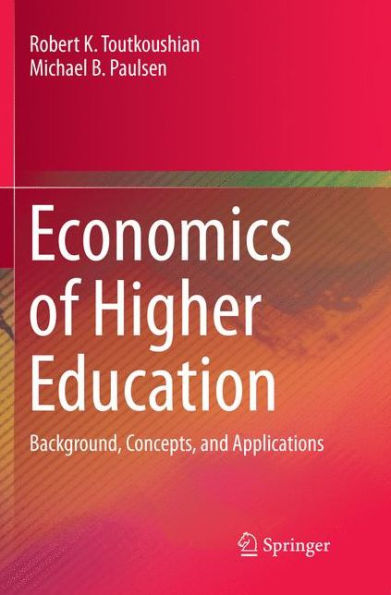From the Publisher
“Toutkoushian and Paulsen attempted a daunting task: to write a book on the economics of higher education for non-economists that is also useful to economists. A book that could be used for reference and as a textbook for higher education classes in economics, finance, and policy. They accomplish this tough balancing act with stunning success in a large volume that will serve as the go-to place for anyone interested in the history and current thinking on the economics of higher education.” (Prof. Emeritus William E. Becker, Jr., Economics, Indiana University)
“The authors have produced a very readable book that higher education administrators, faculty, and graduate students, as well as scholars interested in the economics of higher education should want to read. They have succeeded in explaining key economic concepts in a simple fashion and integrated into the book summaries of the best research on higher education and their views on potential policy changes.” (Prof. Ronald G. Ehrenberg, Industrial and Labor Relations and Economics, Cornell Higher Education Research Institute)
“In this volume, Toutkoushian and Paulsen provide not only foundational information on the economics and finances of colleges and universities, but also creative insights on new ways economic and financial ideas might be applied productively in this arena. The authors' presentation is straightforward and on point, covering core concerns like pricing, demand, and cost analysis as well as more specific issues like decentralized budgeting, tuition discounting, and MOOCs. The volume will surely become a valued resource for leaders, policymakers, and researchers interested in higher education policies and operations.” (Prof. James C. Hearn, Institute of Higher Education, University of Georgia)
“I have taught a graduate level course on the Economics and Finance of Higher Education for more than twenty years. During this time period I have systematically looked for a resource book that would make economic thinking accessible to graduate students without a background in economics or finance. I have found isolated sources on rates of return, higher education markets; supply and demand as it relates to student enrollment and the selection of student majors. I have found individual sources on sources on higher education finance, and on budgeting systems. However, I have never found a single comprehensive source that covers the full range of these topics and more. This volume will become the primary textbook for similar courses in the United States and quite likely many other countries around the globe. It is an excellent resource that I enthusiastically recommend.” (Prof. Don Hossler, School of Education, Indiana University)
“This book, which is considerably more than a textbook on the economics of higher education, goes a long way in helping individuals outside the field understand the pricing and stratification of the product we call "higher education." Numerous examples from studies enliven and enrich the discussion. Data released in the fall of 2015 showing the relationship between earnings and college education across the spectrum of four-year institutions make the book a particularly relevant read for anyone interested in the field.” (Prof. Paula E. Stephan, National Bureau of Economic Research, Georgia State University)



